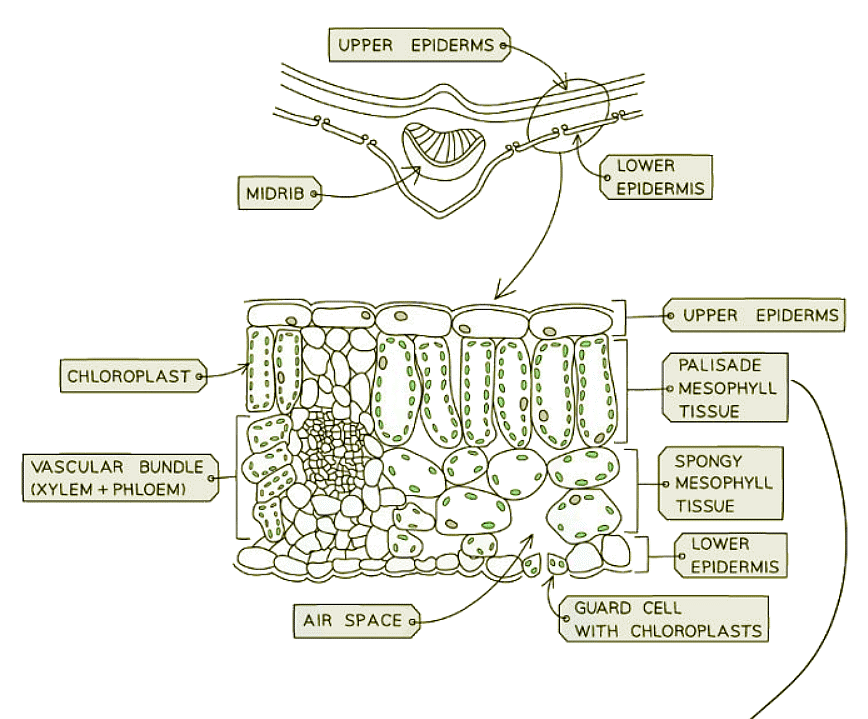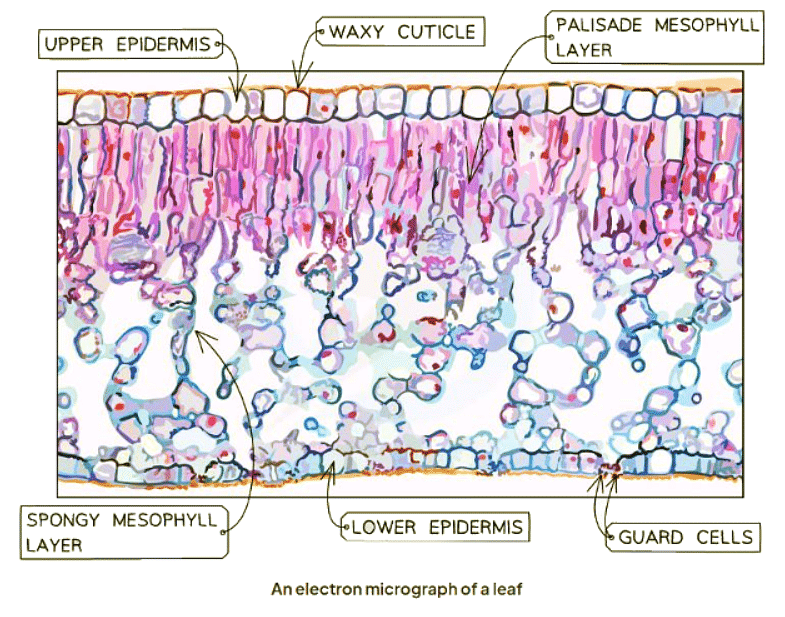Year 11 Exam > Year 11 Notes > Biology for GCSE/IGCSE > Identifying Leaf Structures in a Dicotyledonous Plant
Identifying Leaf Structures in a Dicotyledonous Plant | Biology for GCSE/IGCSE - Year 11 PDF Download
Identifying Leaf Structures in a Dicotyledonous Plant
You will be expected to identify the following structures in the leaf of a dicotyledonous plant:
- Chloroplasts
- Cuticle
- Guard cells
- Stomata
- Upper and lower epidermis
- Palisade mesophyll
- Spongy mesophyll
- Air spaces
- Vascular bundles (xylem and phloem)



The document Identifying Leaf Structures in a Dicotyledonous Plant | Biology for GCSE/IGCSE - Year 11 is a part of the Year 11 Course Biology for GCSE/IGCSE.
All you need of Year 11 at this link: Year 11
|
110 videos|158 docs|34 tests
|
FAQs on Identifying Leaf Structures in a Dicotyledonous Plant - Biology for GCSE/IGCSE - Year 11
| 1. What is the main function of the leaf structures in a dicotyledonous plant? |  |
Ans. The main function of the leaf structures in a dicotyledonous plant is to carry out photosynthesis, where they absorb sunlight, carbon dioxide, and water to produce glucose and oxygen.
| 2. How are the leaf structures of a dicotyledonous plant adapted for photosynthesis? |  |
Ans. The leaf structures of a dicotyledonous plant are adapted for photosynthesis with features such as a large surface area, thin and flat shape, and the presence of chloroplasts containing chlorophyll for capturing sunlight.
| 3. What are the key components of a leaf structure in a dicotyledonous plant? |  |
Ans. The key components of a leaf structure in a dicotyledonous plant include the epidermis, mesophyll tissue (palisade and spongy layers), stomata, and veins (xylem and phloem) for transport of water, nutrients, and gases.
| 4. How does the cross-section of a leaf of a dicotyledonous plant help in its functioning? |  |
Ans. The cross-section of a leaf of a dicotyledonous plant provides a visual representation of its internal structures, showing the arrangement of cells, tissues, and vascular bundles that are essential for photosynthesis, gas exchange, and nutrient transport.
| 5. How do the leaf structures of a dicotyledonous plant contribute to overall plant nutrition? |  |
Ans. The leaf structures of a dicotyledonous plant play a crucial role in plant nutrition by synthesizing glucose through photosynthesis, which serves as a source of energy for the plant and supports growth, development, and reproduction.

|
Explore Courses for Year 11 exam
|

|
Signup for Free!
Signup to see your scores go up within 7 days! Learn & Practice with 1000+ FREE Notes, Videos & Tests.
Related Searches
















